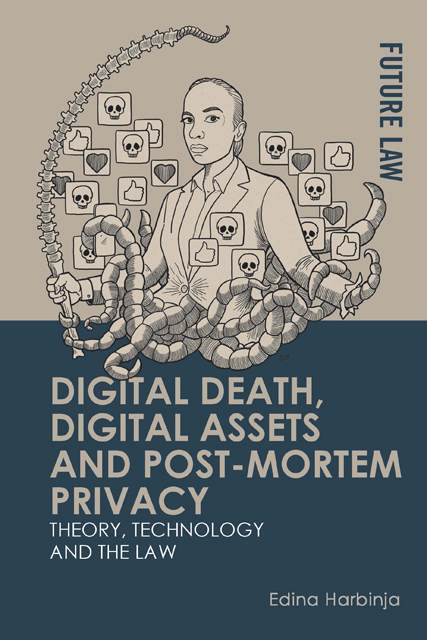Book contents
- Frontmatter
- Contents
- Acknowledgements
- Table of Cases
- Table of Legislation
- 1 Introduction
- 2 Theoretical Underpinnings: Property
- 3 Theoretical Underpinnings: Autonomy, Testamentary Freedom and Post-Mortem Privacy
- 4 Social Networks
- 5 Games, Virtual Worlds and Virtual Realities
- 6 Emails
- 7 Conclusion
- Bibliography
- Index
4 - Social Networks
Published online by Cambridge University Press: 25 April 2023
- Frontmatter
- Contents
- Acknowledgements
- Table of Cases
- Table of Legislation
- 1 Introduction
- 2 Theoretical Underpinnings: Property
- 3 Theoretical Underpinnings: Autonomy, Testamentary Freedom and Post-Mortem Privacy
- 4 Social Networks
- 5 Games, Virtual Worlds and Virtual Realities
- 6 Emails
- 7 Conclusion
- Bibliography
- Index
Summary
4.1 Conceptualisation and a Brief History of Social Networks
Social network sites (SNSs) can be defined as:
web-based services that allow individuals to (1) construct a public or semi-public profile within a bounded system, (2) articulate a list of other users with whom they share a connection, and (3) view and traverse their list of connections and those made by others within the system.
boyd and Ellison use the term ‘social network sites’ as opposed to the term ‘social networking sites’ that is often considered its synonym. They argue that these terms are different in that ‘networking’ emphasises relationship initiation, often between strangers, which is not the primary purpose of social network sites, ‘nor is it what differentiates them from other forms of computer-mediated communication (CMC)’. Instead, social networks are primarily used to maintain and continue existing offline relationships between their users. This varies across SNSs and is more accurate for Facebook than for Instagram, where users follow and interact with a more significant number of ‘strangers’ who choose to leave their profiles open.
Grimmelmann, in his comprehensive early study on Facebook, accepts this definition and adds the feature of ‘explicitness’, noting that social networks are ‘the explicit representation of connections among users’. These connections and interactions, according to Grimmelmann, have three most important aspects: identity (they enable users to create and build their identities, so they are ‘as much performative as informative’), relationship and community. Regarding the relationship aspect, research finds social networks have significant social impact, including their use to maintain social ties, revive ‘dormant’ relationships and avoid social isolation. Social networks carry many negative connotations and consequences, such as addiction, bullying, harassment and trolling. A great range of credible research has emerged over the years to evidence these phenomena. However, this aspect of SNSs is outside the scope of this book.
Another critical aspect of SNSs is that they facilitate the posting and sharing of user-generated content (UGC), discussed in Chapter 1. The individual terms in the UGC phrase take the following meanings: user –a computer or Internet user and amateurs; generated –created by these users, including a degree of creativity, something not merely uploaded or copied; content –digital content, the content available online. White, for example, when defining UGC, notes that ‘Blogs, wikis, social-networking sites and video-sharing sites (for example, YouTube) are among the most popular UGC technologies.
- Type
- Chapter
- Information
- Digital Death, Digital Assets and Post-Mortem PrivacyTheory, Technology and the Law, pp. 84 - 119Publisher: Edinburgh University PressPrint publication year: 2022



